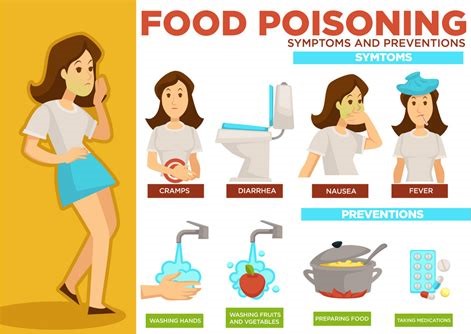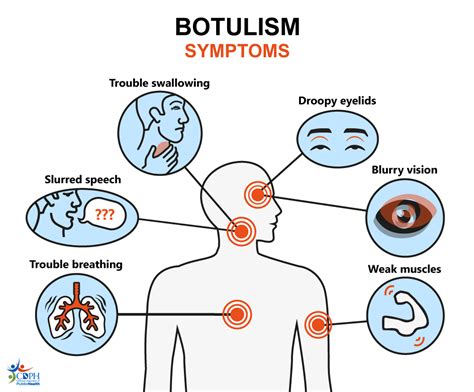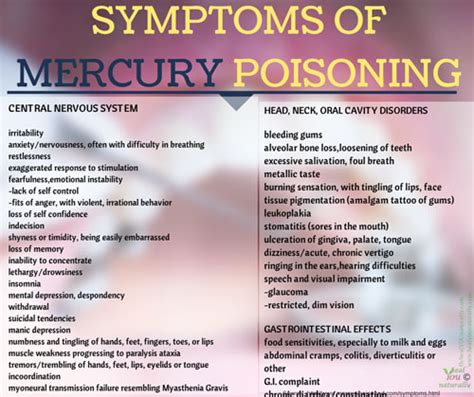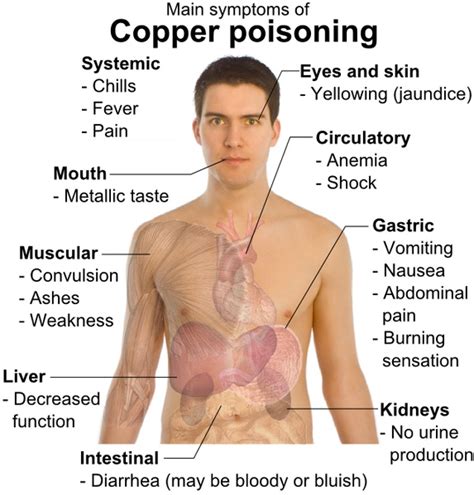
Food Poisoning: Causes, Symptoms, and Prevention Tips
1. Common Causes of Food Poisoning
Food poisoning is a common and unfortunate occurrence that can affect anyone. It is caused by consuming contaminated food or beverages, which contain harmful bacteria, viruses, parasites, or toxins. Understanding the common causes of food poisoning is crucial in preventing it from happening. By being aware of the potential sources of contamination, we can take necessary precautions to protect ourselves and our loved ones.
There are several factors that contribute to the common causes of food poisoning. One of the primary reasons is improper food handling and hygiene practices. This includes not washing hands thoroughly before preparing or eating food, using dirty utensils or cutting boards, and not properly storing or refrigerating food. Contamination can also occur during food processing and manufacturing if proper sanitation measures are not followed.
Another common cause of food poisoning is cross-contamination. This happens when bacteria or other pathogens from raw meat, poultry, seafood, or eggs come into contact with other foods, utensils, or surfaces. For example, using the same cutting board for raw chicken and fresh vegetables without washing it in between can lead to the transfer of harmful bacteria.
- Poor personal hygiene: Not washing hands before handling food.
- Unsafe food storage: Not refrigerating perishable foods promptly.
- Cross-contamination: Using the same cutting board for different food items.
In addition, consuming undercooked or raw foods can also result in food poisoning. Raw or undercooked eggs, unpasteurized dairy products, and raw seafood such as oysters or sushi can contain bacteria or other pathogens that can cause illness. It is essential to cook these foods thoroughly to kill any potential bacteria and ensure their safety.
In summary, common causes of food poisoning include improper food handling and hygiene practices, cross-contamination, and consuming undercooked or raw foods. By being aware of these causes, we can take necessary precautions to prevent food poisoning and protect our health. Safe food handling practices, such as washing hands before preparing or eating food, proper storage and refrigeration of perishable foods, and avoiding cross-contamination, are crucial in keeping food safe and free from harmful pathogens.
2. Symptoms of Food Poisoning
Food poisoning is a common health issue that occurs due to consuming contaminated food or water. It can lead to various symptoms that can range from mild discomfort to severe illness. Recognizing the symptoms of food poisoning is important as it can help you take the necessary steps to treat and prevent further complications. In this blog post, we will discuss some of the most common symptoms of food poisoning and what you can do to alleviate them.
1. Nausea and Vomiting: One of the most common symptoms of food poisoning is feeling nauseous and vomiting. If you have consumed contaminated food, your body tries to get rid of the toxins by forcing them out through vomiting. This can help alleviate the discomfort and prevent further absorption of harmful substances.
2. Diarrhea: Another common symptom of food poisoning is diarrhea. Consuming contaminated food or water can irritate your digestive system, leading to loose and watery stools. It is important to stay hydrated if you are experiencing diarrhea to prevent dehydration.
3. Abdominal Pain and Cramps: Food poisoning can cause abdominal pain and cramps due to the irritation and inflammation of the digestive system. These pains can range from mild discomfort to severe cramping, and they may come and go or persist for an extended period.
4. Fever and Chills: In some cases, food poisoning can cause a fever and chills. This is often a sign that your body is fighting off an infection. If you have a high fever (above 101.5°F or 38.6°C) or prolonged symptoms, it is important to seek medical attention.
To summarize, food poisoning can present with various symptoms including nausea, vomiting, diarrhea, abdominal pain, cramps, fever, and chills. If you experience any of these symptoms after consuming food, it is essential to take the necessary steps to treat and prevent further complications. This may include staying hydrated, resting, and seeking medical attention if needed. Remember, proper food handling and hygiene practices are crucial in preventing food poisoning in the first place.
3. How to Prevent Food Poisoning
Food poisoning is a common and potentially dangerous condition that can be caused by consuming contaminated food or water. It occurs when harmful bacteria, viruses, or parasites enter the body and multiply. The symptoms of food poisoning can range from mild discomfort to severe illness, and in some cases, it can even be life-threatening. However, the good news is that there are steps you can take to prevent food poisoning and protect yourself and your loved ones from getting sick.
1. Proper hand hygiene: One of the most important ways to prevent food poisoning is by practicing good hand hygiene. Always wash your hands thoroughly with soap and water before handling any food. Be sure to wash your hands for at least 20 seconds, making sure to clean all areas, including between your fingers and under your nails. If soap and water are not available, you can use hand sanitizer with at least 60% alcohol.
2. Safe food storage: Properly storing food can also help prevent food poisoning. Make sure to keep raw meats, poultry, and seafood separate from other foods to avoid cross-contamination. Store these items on the bottom shelf of the refrigerator to prevent their juices from dripping onto other foods. Keep your refrigerator temperature below 40°F (4°C) to slow down the growth of bacteria. Additionally, make sure to check the expiration dates on packaged foods and discard any that are past their expiration date.
3. Thorough cooking: Cooking food to the right temperature is crucial in preventing food poisoning. Use a food thermometer to ensure that meat, poultry, and seafood are cooked to their safe internal temperatures. The FDA recommends cooking beef, pork, veal, and lamb to an internal temperature of at least 145°F (63°C), chicken and turkey to at least 165°F (74°C), and fish to at least 145°F (63°C). Avoid eating raw or undercooked eggs, as well as dishes that contain raw or undercooked eggs.
4. Safe food handling: Practice safe food handling throughout the entire food preparation process. Avoid touching your face, hair, or other surfaces while handling food. Use separate cutting boards for raw meats and other foods, and thoroughly clean them with hot, soapy water after each use. When serving food, keep it out of the danger zone, which is the temperature range between 40°F (4°C) and 140°F (60°C), where bacteria can multiply rapidly. Refrigerate leftovers promptly to reduce the risk of bacterial growth.
By following these preventive measures, you can greatly reduce your risk of food poisoning. Remember to always practice good hand hygiene, properly store food, cook it thoroughly, and handle it safely. It’s also important to stay informed about food recalls and outbreaks in your area to further minimize your risk. Stay safe and enjoy your meals without the worry of food poisoning!
4. Foods at High Risk of Contamination
Foods at High Risk of Contamination
When it comes to food safety, it is important to be aware of the foods that have a higher risk of contamination. By understanding which foods are more susceptible to bacteria and other harmful pathogens, we can take necessary precautions to protect ourselves and our loved ones from foodborne illnesses. Listed below are some of the high-risk foods that require extra attention and care:
1. Raw or undercooked eggs: Raw or undercooked eggs can be contaminated with Salmonella, a bacteria known to cause food poisoning. It is crucial to cook eggs thoroughly to eliminate any potential bacteria.
2. Raw or undercooked meats: Beef, poultry, and pork should always be cooked to the recommended internal temperature to ensure the destruction of harmful pathogens like Salmonella, E. coli, and Campylobacter.
3. Unpasteurized milk and dairy products: Unpasteurized milk and dairy products pose a higher risk of contamination due to the potential presence of bacteria such as Listeria, Salmonella, and E. coli. Opt for pasteurized versions to minimize the risk.
4. Raw sprouts: Sprouts, including alfalfa, bean, and clover sprouts, have been associated with numerous outbreaks of foodborne illness. The warm and humid conditions required for sprouting also promote the growth of bacteria like Salmonella and E. coli.
5. Raw seafood and shellfish: Consuming raw or undercooked seafood, including fish and shellfish, increases the likelihood of contracting foodborne illnesses such as Vibrio and Norovirus infections.
6. Unwashed fruits and vegetables: Fruits and vegetables that are not thoroughly washed can harbor harmful bacteria, parasites, and pesticide residues. Always wash your produce before consuming.
7. Deli meats and hot dogs: Processed meats like deli meats and hot dogs have a higher risk of contamination with Listeria, a bacteria that thrives in cold environments, such as refrigerators.
8. Soft cheeses: Soft cheeses made from unpasteurized milk, such as feta, Brie, Camembert, and blue cheese, can contain Listeria, which poses a danger, especially to pregnant women.
9. Raw honey: Although honey is known for its antimicrobial properties, infants under one-year-old should avoid consuming raw honey due to the risk of botulism contamination.
10. Canned foods: While canned foods are generally safe, improperly canned or damaged cans can lead to the growth of Clostridium botulinum, causing botulism. Always check for signs of swelling or damage before consuming canned goods.
| Foods | Risk of Contamination |
|---|---|
| Raw or undercooked eggs | Salmonella |
| Raw or undercooked meats | Salmonella, E. coli, Campylobacter |
| Unpasteurized milk and dairy products | Listeria, Salmonella, E. coli |
| Raw sprouts | Salmonella, E. coli |
| Raw seafood and shellfish | Vibrio, Norovirus |
| Unwashed fruits and vegetables | Bacteria, parasites, pesticide residues |
| Deli meats and hot dogs | Listeria |
| Soft cheeses | Listeria |
| Raw honey | Botulism (risk for infants) |
| Canned foods | Clostridium botulinum |
By being knowledgeable about these high-risk foods, we can take necessary precautions while handling and preparing them. Always prioritize proper cooking techniques, washing produce thoroughly, and opting for pasteurized options to reduce the risk of contamination and ensure a safe and enjoyable dining experience.
5. Best Practices for Safe Food Handling
When it comes to handling food, it is crucial to prioritize safety to prevent the risk of food poisoning. Following best practices in food handling is essential to ensure that the food we eat is safe and free from any contamination. By implementing these practices, we can minimize the chances of foodborne illnesses and protect the well-being of ourselves and those we cook for.
One of the key best practices for safe food handling is to always wash hands thoroughly before and after handling food. This simple yet effective step helps to eliminate any potential bacteria or viruses that may be present on our hands. Using warm water and soap, it is recommended to wash hands for at least 20 seconds, paying attention to areas such as between fingers and under nails. Proper hand hygiene is the first line of defense against any potential contaminants that can cause foodborne illnesses.
The second best practice for safe food handling is to separate raw and cooked foods to prevent cross-contamination. Raw meats, seafood, and poultry, in particular, can contain harmful bacteria such as Salmonella or E. coli. It is essential to keep these raw foods separate from ready-to-eat or cooked foods to avoid the transfer of any bacteria. This can be achieved by using separate cutting boards, utensils, and storage containers for raw and cooked foods.
Furthermore, it is important to ensure that food is cooked thoroughly to kill any bacteria present. Using a food thermometer is recommended to check the internal temperature of the food, as it can help determine if it has been cooked to a safe temperature. Different types of food require specific internal temperatures to be considered safe for consumption, so it is essential to be aware of these guidelines. Consuming undercooked or raw food can put individuals at risk of developing foodborne illnesses.
In addition to these practices, proper storage of food is also crucial for maintaining its safety. Perishable foods such as meat, dairy products, and leftovers should be refrigerated promptly to prevent the growth of bacteria. The refrigerator temperature should be set at or below 40°F (4°C) to keep food fresh and prevent any potential contamination. It is also important to regularly clean and sanitize kitchen surfaces, utensils, and appliances to maintain a clean and safe food preparation environment.
Overall, following best practices for safe food handling is essential to prevent the risk of food poisoning. By prioritizing proper hand hygiene, reducing cross-contamination, ensuring thorough cooking, and implementing proper food storage, individuals can significantly reduce the chances of foodborne illnesses. By being aware of these practices and incorporating them into our daily lives, we can ensure that the food we consume is safe, delicious, and free from any potential contaminants.
- Wash hands thoroughly before and after handling food.
- Keep raw and cooked foods separate to prevent cross-contamination.
- Use a food thermometer to ensure proper cooking temperatures are reached.
- Promptly refrigerate perishable foods to prevent bacterial growth.
- Regularly clean and sanitize kitchen surfaces, utensils, and appliances.
| Best Practices for Safe Food Handling: |
|---|
| 1. Wash hands thoroughly before and after handling food. |
| 2. Keep raw and cooked foods separate to prevent cross-contamination. |
| 3. Use a food thermometer to ensure proper cooking temperatures are reached. |
| 4. Promptly refrigerate perishable foods to prevent bacterial growth. |
| 5. Regularly clean and sanitize kitchen surfaces, utensils, and appliances. |
Frequently Asked Questions
Question 1: What are the common causes of food poisoning?
The common causes of food poisoning include undercooked or raw food, cross-contamination, improper storage of food, and contaminated water or ice.
Question 2: What are the symptoms of food poisoning?
The symptoms of food poisoning can vary, but commonly include nausea, vomiting, stomach cramps, diarrhea, fever, and fatigue.
Question 3: How can food poisoning be prevented?
To prevent food poisoning, it is important to practice proper food safety measures such as washing hands frequently, cooking food thoroughly, avoiding cross-contamination, maintaining proper food storage temperatures, and using safe water sources.
Question 4: Which foods are at high risk of contamination?
Foods such as raw or undercooked meat, poultry, eggs, seafood, unpasteurized dairy products, and fresh produce have a higher risk of contamination and can cause food poisoning.
Question 5: What are the best practices for safe food handling?
The best practices for safe food handling include cleaning and sanitizing surfaces and utensils, separating raw and cooked foods, using separate cutting boards, reheating leftovers thoroughly, and following expiration dates.
Question 6: Can food poisoning be life-threatening?
While most cases of food poisoning resolve on their own without severe complications, some cases can be life-threatening, especially for vulnerable individuals such as young children, pregnant women, the elderly, and those with weakened immune systems.
Question 7: When should medical attention be sought for food poisoning?
Medical attention should be sought if food poisoning symptoms worsen or persist for more than a few days, if there is blood in vomit or stool, if dehydration occurs, or if there are signs of more serious complications such as severe abdominal pain or high fever.


